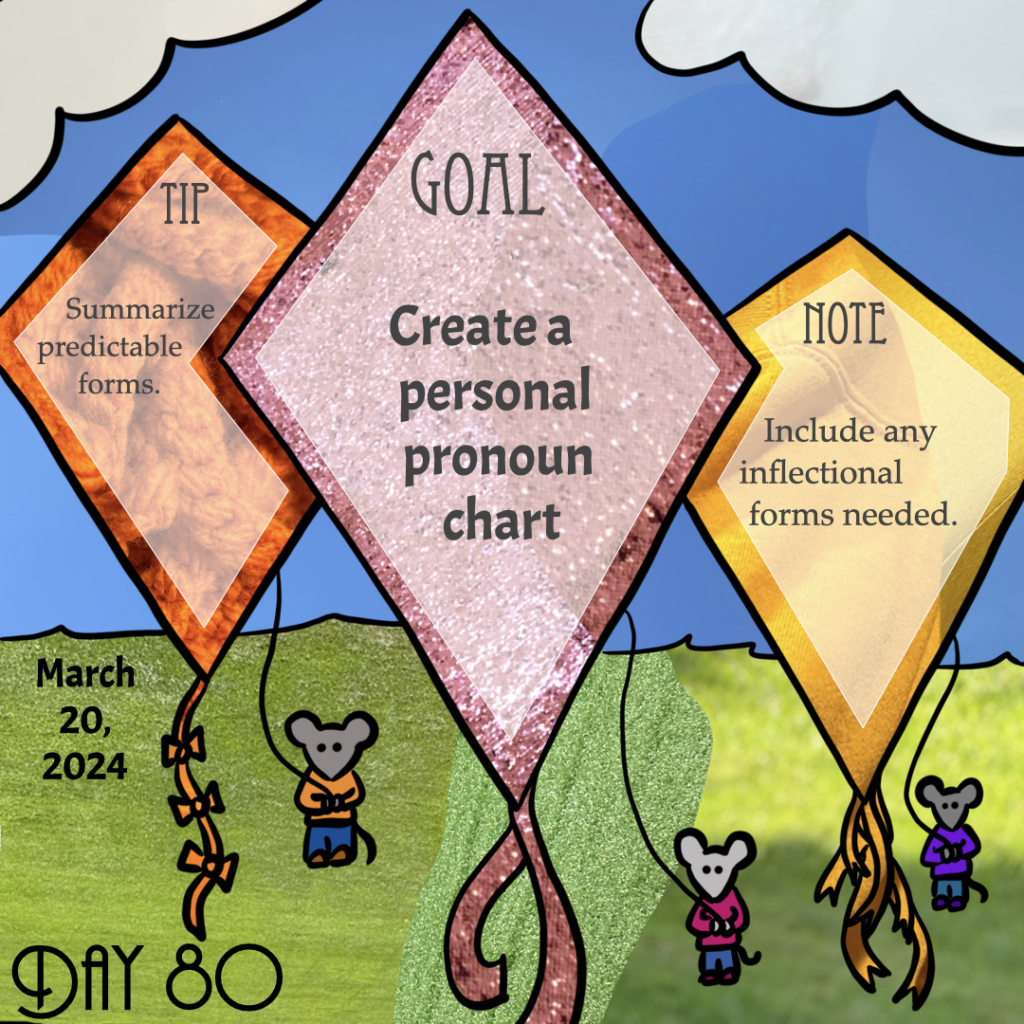
Goal: Create a personal pronoun chart
Note: Include any inflectional forms needed.
Tip: Summarize predictable forms.
Work focus: Solidify/Write/Share
Now that you’ve created all the forms and reviewed them several times over, today’s goal is to make a reference chart of personal pronoun forms for your language documentation. Having a chart will make it easier as you need to use your language to quickly see what forms you have for different grammatical situations. If you have extensive inflectional forms, you may end up needing to create multiple charts to nicely fit all the information into tables that make sense to you and your method of presenting your language’s features.
If you are adding regular inflectional affixes to your pronouns, you may be able to reduce part of your chart to “dependent forms” of pronouns. For instance, if ezo is the independent form for “they”, and z(o)- is the dependent form that attaches to case suffixes, you could just list those two forms, knowing that z(o)- will occur with all your case affixes without any further phonological shifts.
Even if you’re able to summarize forms, it’s good to list out all possible inflected forms in your notes at least once to ensure you haven’t missed any awkward or difficult ones. Sometimes it’s easy to think “Just add this base to that prefix!” without realizing the phonological repercussions of adding that prefix to that base. It may result in something that is difficult to produce, especially in quick speech.
